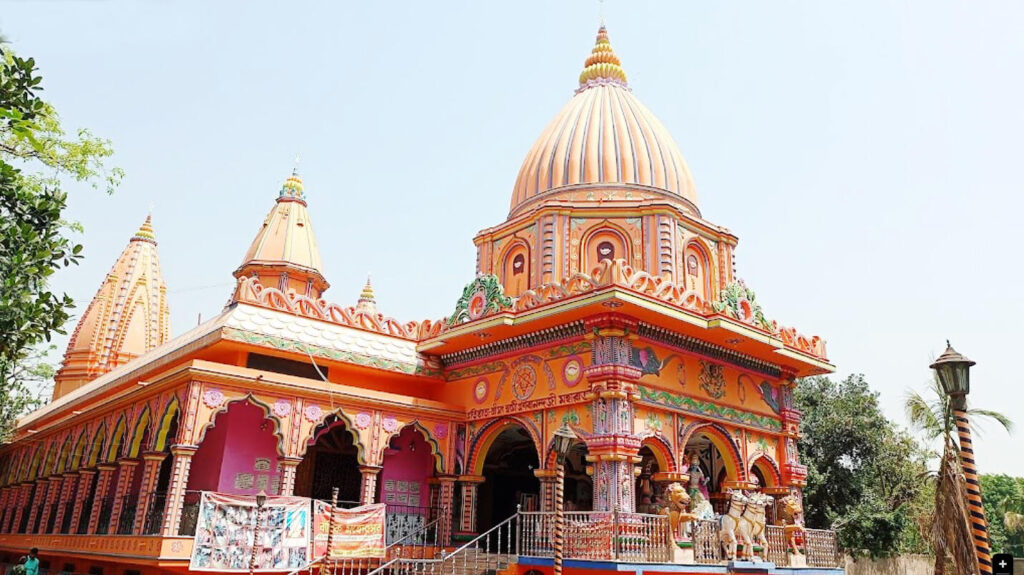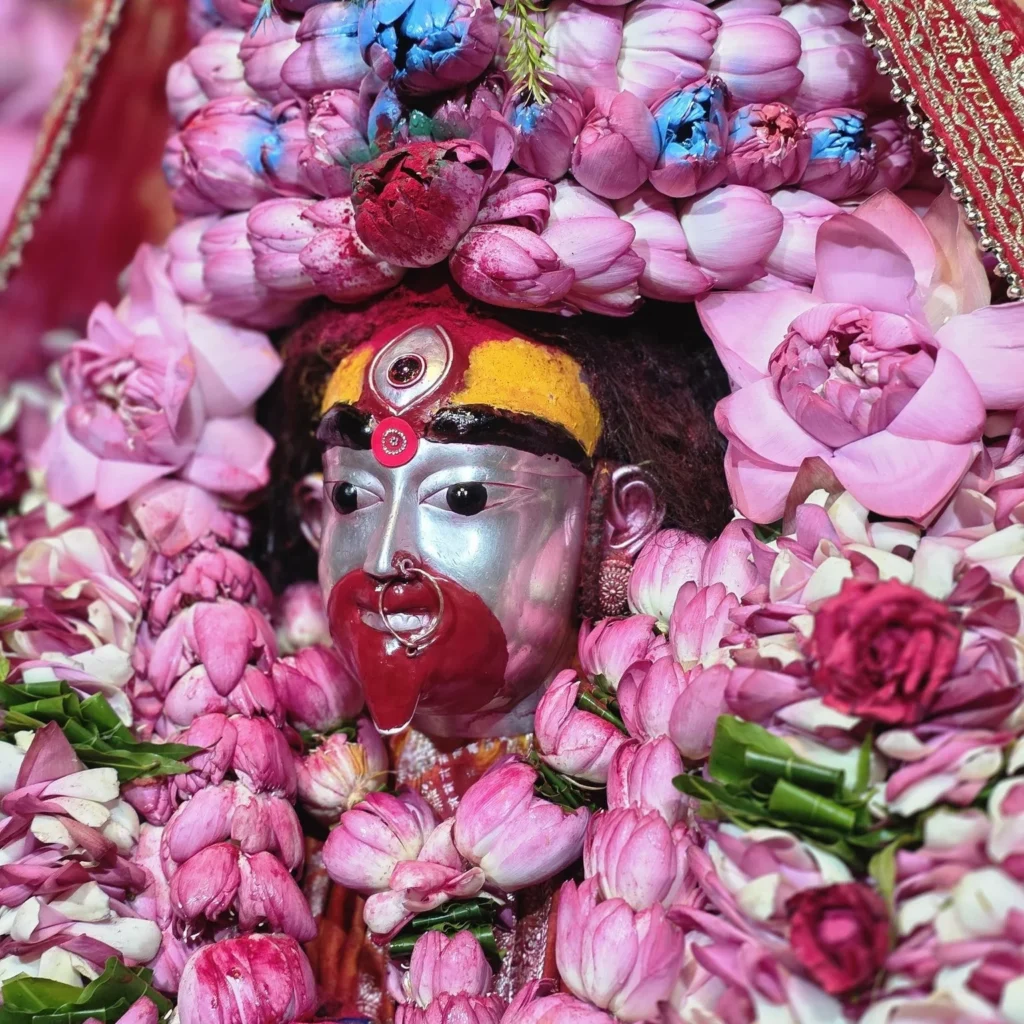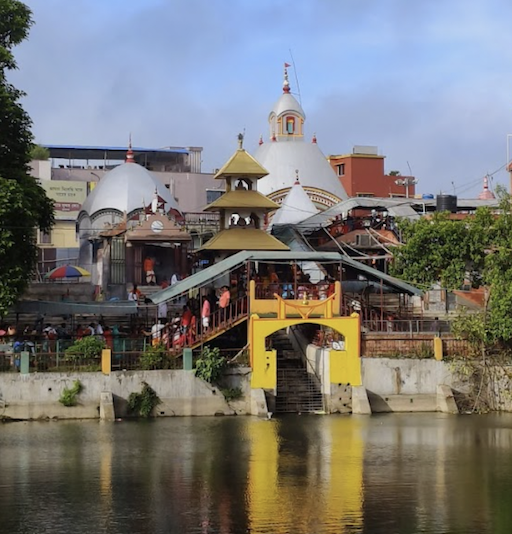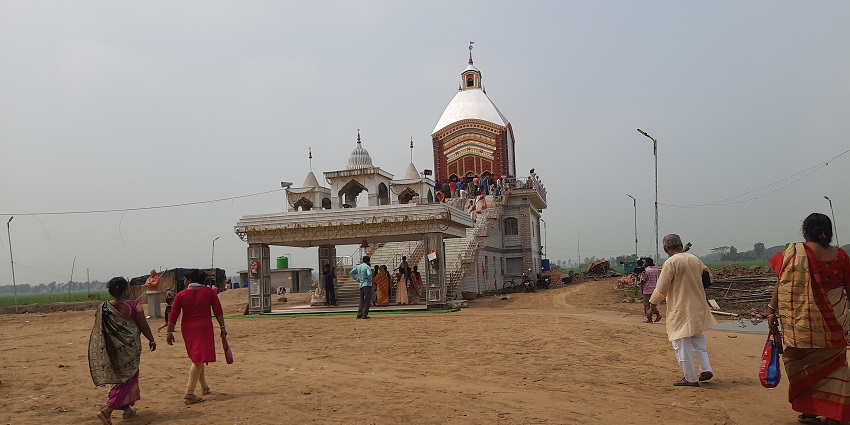Nestled in the Birbhum district of West Bengal, Tarapith Temple is one of the most revered destinations for devotees of Maa Tara, a fierce and compassionate form of Goddess Shakti. Renowned for its spiritual energy, Tantric traditions, and deep cultural significance, Tarapith has attracted pilgrims for centuries. Unlike other temples, Tarapith is uniquely associated with Tantra and spiritual practices, making it a distinct center of divine worship in India.
The temple’s reputation is deeply intertwined with stories of miracles and divine intervention. Devotees visit Tarapith seeking protection, fulfillment of wishes, and spiritual guidance, drawn by the powerful aura of Maa Tara.

Historical Background
The history of Tarapith Temple is a blend of mythology, folklore, and historical accounts. According to legend, the goddess Tara appeared here to guide seekers on the path of devotion and spiritual awakening. The temple is believed to be centuries old, with its origins tracing back to medieval Bengal. Over time, it became a hub for Tantric practitioners who performed rituals to harness spiritual energy and seek divine wisdom.
The temple’s location, surrounded by dense forests and the nearby Mayurakshi River, added to its mystique. This setting created an ideal environment for meditation, spiritual practices, and religious gatherings, solidifying Tarapith’s reputation as a powerful spiritual center.

Spiritual Significance
Tarapith Temple is unique for its association with Maa Tara in her fierce form, representing protection, courage, and the destruction of negativity. Unlike more mainstream temples, Tarapith is also known for its Tantric practices, which are historically performed by sadhus and devotees seeking higher spiritual experiences.
The goddess here is believed to fulfill the deepest wishes of sincere devotees. Pilgrims often recount experiences of guidance, protection, and miraculous interventions after visiting Tarapith. This reputation has made it a sought-after destination for both ordinary devotees and spiritual seekers exploring Tantra.

Temple Architecture and Layout
Tarapith Temple is modest in construction but rich in spiritual ambiance. The central shrine houses the idol of Maa Tara, depicted in a standing posture with one hand in blessing and the other holding symbolic objects representing her divine powers. The architecture reflects typical Bengali temple styles, with a focus on simplicity that emphasizes spiritual devotion over grandeur.
The temple complex also includes smaller shrines dedicated to other deities associated with Maa Tara. These shrines allow devotees to engage with multiple aspects of spiritual energy during their visit. The surrounding area, with its serene river and natural landscape, enhances the meditative experience for pilgrims.

Festivals and Rituals
Tarapith Temple is known for its vibrant festivals, which draw devotees from all over India.
Tara Puja
Tara Puja is the most important festival celebrated at the temple, particularly during the month of Ashwin (September-October). Devotees gather in large numbers to offer prayers, perform rituals, and seek blessings for prosperity, protection, and spiritual growth.
Kali Puja and Other Celebrations
While Tara is the primary deity, other festivals like Kali Puja are observed, reflecting the shared attributes of Maa Tara and Maa Kali. These festivals often include traditional rituals, devotional singing, and cultural performances that enhance the temple’s spiritual and social significance.
Daily Rituals
Daily rituals at Tarapith are performed by priests and sadhus, including morning and evening aarti, chanting of mantras, and offering of flowers, sweets, and incense. The rituals are designed to create a potent spiritual environment, allowing devotees to feel the divine energy of Maa Tara.
Visiting Tarapith Temple
Tarapith Temple is located in a relatively remote part of West Bengal, which adds to its spiritual charm.
How to Reach
- By Road: Tarapith is connected by road to nearby towns like Rampurhat and Suri. Buses and taxis are available from these hubs.
- By Rail: The nearest railway station is Rampurhat, from where one can hire local transport to reach the temple.
- By Air: The closest airport is in Kolkata, around 220 km away, with onward road or rail travel required.
Timings
- Open: 5:00 AM
- Close: 9:00 PM
Tips for Visitors
- Wear comfortable clothing suitable for long walks and temple protocols.
- Visit early in the morning to avoid crowds, especially during festival seasons.
- Engage with local guides to learn about the Tantric history and legends associated with the temple.
- Respect temple rules regarding photography and offerings.
Spiritual Experiences at Tarapith
Devotees visiting Tarapith often report a deep sense of spiritual awakening. The combination of natural surroundings, temple rituals, and the goddess’s energy creates an immersive experience. Many pilgrims undertake extended stays at the temple to participate in sadhana (spiritual practice), meditation, and rituals guided by local priests and Tantric practitioners.
The temple is particularly known for helping devotees overcome fear, challenges, and personal obstacles, reflecting Maa Tara’s protective and transformative energy.
FAQs for Tarapith Temple
1. Why is Tarapith Temple famous?
Tarapith Temple is a Shakti Peetha dedicated to Goddess Tara, known for her fierce yet compassionate nature, attracting devotees seeking blessings and spiritual healing.
2. Where is Tarapith Temple located?
It is located in Birbhum district, West Bengal, near Suri.
3. What is worshipped at Tarapith Temple?
The temple worships Goddess Tara, one of the ten Mahavidyas, associated with power, protection, and liberation.
4. What are the temple timings?
The temple generally opens from 6:00 AM to 12:00 PM and 3:00 PM to 9:00 PM.
5. Is photography allowed inside Tarapith Temple?
Photography is generally restricted inside the sanctum, but allowed in some surrounding areas.
6. What is the significance of Tarapith as a Shakti Peetha?
It is believed that the eyes of Goddess Sati fell here, making it a sacred place of divine feminine energy.
7. How can I reach Tarapith Temple?
It is accessible by train, bus, or taxi from nearby cities like Suri, Bolpur, or Kolkata.
8. Are there any special rituals at Tarapith Temple?
Yes, devotees perform Tantric rituals, offerings, and aarti, and the temple is famous for its cremation grounds, symbolizing spiritual liberation.
9. Is there accommodation near Tarapith Temple?
Yes, there are guesthouses and lodges nearby for pilgrims.
10. What is the best time to visit Tarapith Temple?
October to March is ideal, and major festivals include Durga Puja and Kali Puja.


